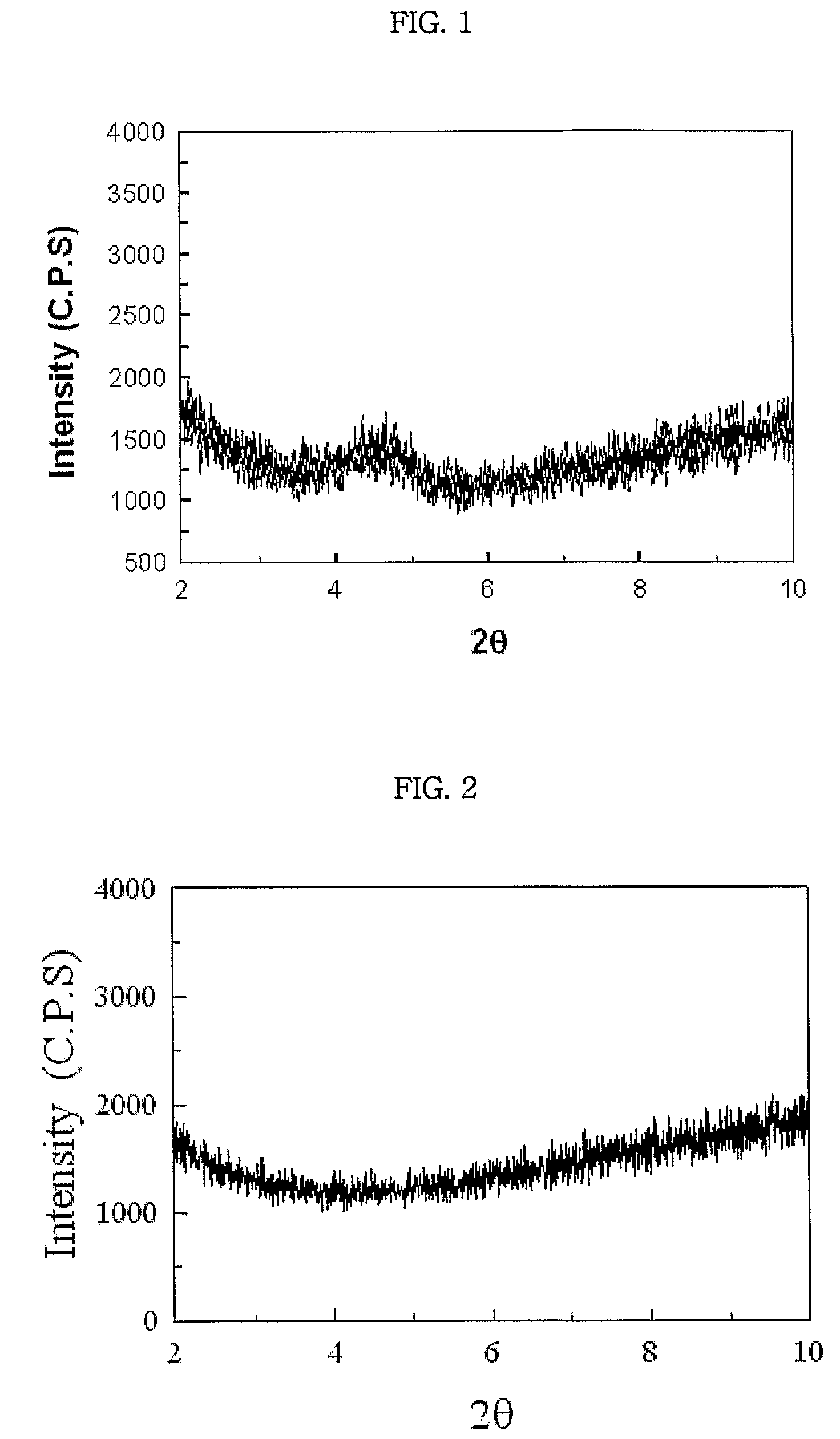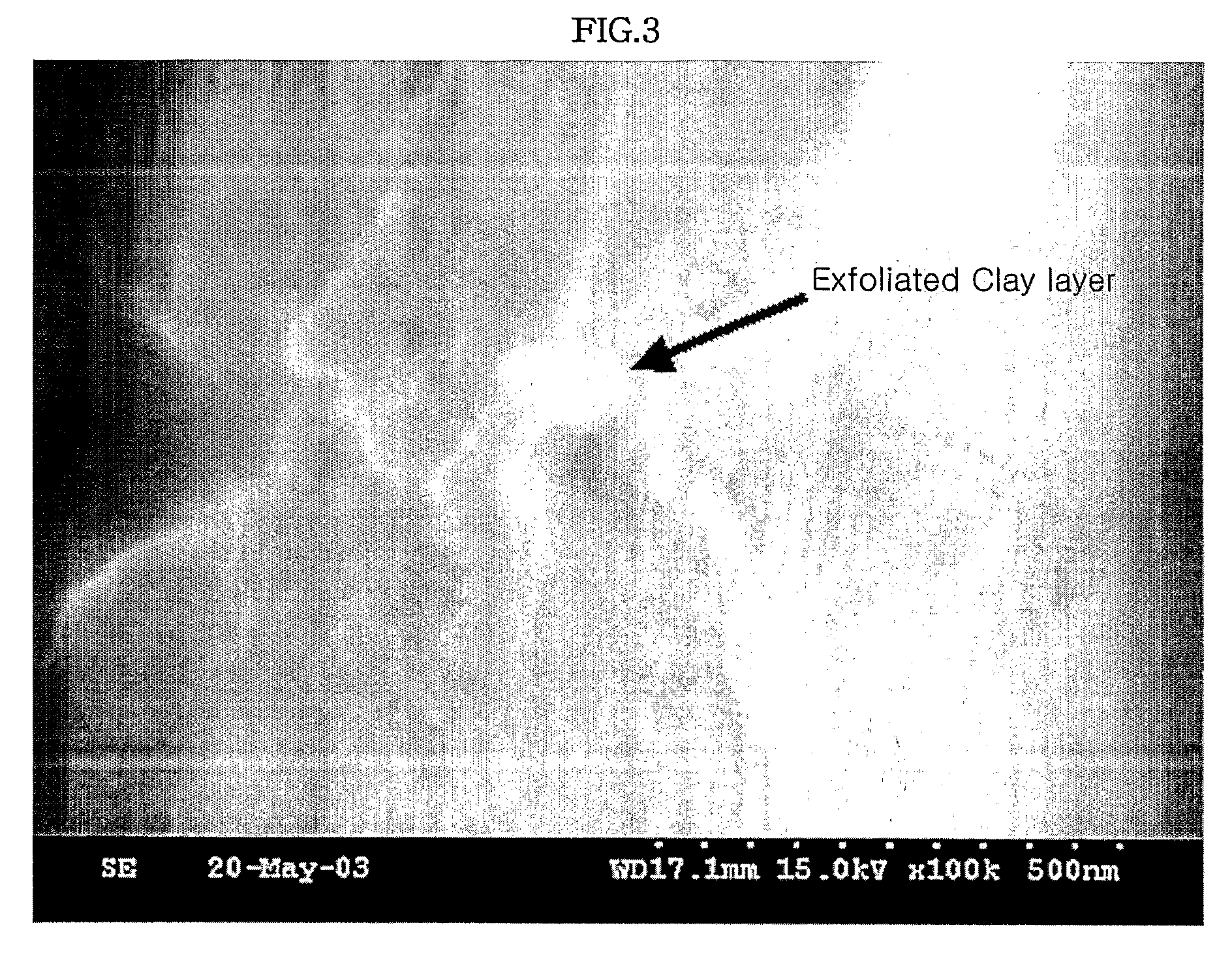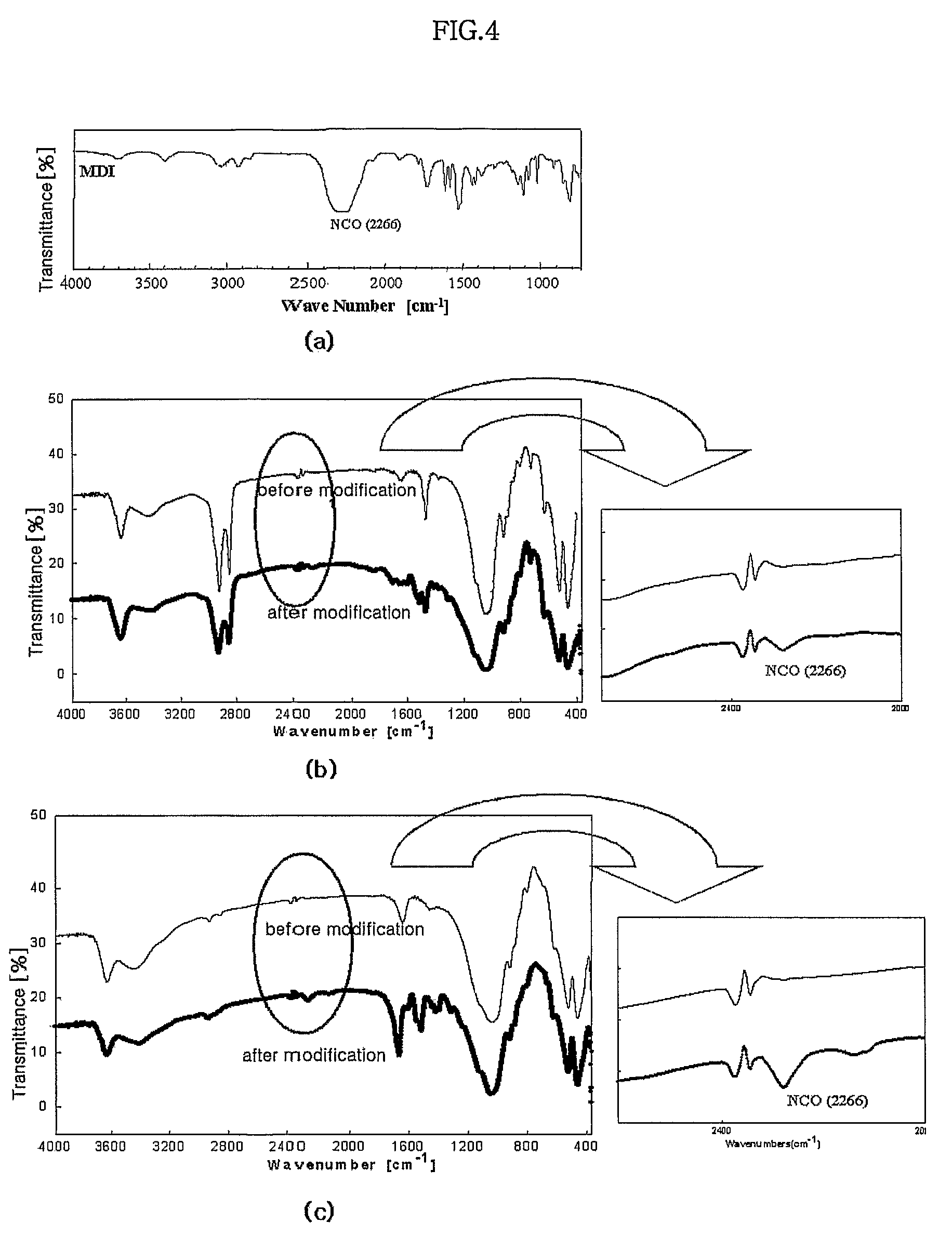Clay-polyurethane nanocomposite and method for preparing the same
a polyurethane and nano-composite technology, applied in the direction of pigmenting treatment, layered products, etc., can solve the problems of insufficient intercalation of polymer between clay layers, inability to achieve intended improvement in physical properties, and difficult direct exfoliation and dispersion of clay in polymer resin, etc., to achieve superior physical properties, improve physical properties, and improve physical properties of polyurethane significantly
- Summary
- Abstract
- Description
- Claims
- Application Information
AI Technical Summary
Benefits of technology
Problems solved by technology
Method used
Image
Examples
example 1
[0074]1-(1). Preparation of Polymeric MDI Containing Modified Clay
[0075]An organic clay (Closite 15A, Southern Clay Products) treated with an alkyl amine salt and having an interlayer spacing of 31.5 Å was dried in a vacuum oven at 90° C. for 24 hours to remove moisture contained therein. Next, 0.5% by weight of the clay was added to polymeric MDI (M20, BASF), based on the weight of the polymeric MDI, and the resulting mixture was reacted in an oil thermostatic bath while maintaining the reaction temperature at 50° C. The reaction mixture was stirred using a mechanical stirrer at a relatively low speed of 200 rpm for 30 minutes, followed by stirring at a relatively high speed of 2,000 rpm for 4 hours, so as to facilitate the intercalation of the polymeric 4,4′-diphenylmethanediisocyanate between the clay layers and to smoothly proceed the reaction.
[0076]1-(2). Preparation of Clay-Polyurethane Nanocomposite
[0077]101.3 g of the modified clay-containing polymeric MDI, and 100 g of poly...
example 2
[0078]A clay-polyurethane nanocomposite was prepared in the same manner as in Example 1, except that an organic clay having an interlayer spacing of 11.7 Å was used.
example 3
[0079]A clay-polyurethane nanocomposite was prepared in the same manner as in Example 1, except that the amount of the clay was increased to 1% by weight, based on the weight of the polymeric MDI.
PUM
| Property | Measurement | Unit |
|---|---|---|
| temperature | aaaaa | aaaaa |
| temperature | aaaaa | aaaaa |
| temperature | aaaaa | aaaaa |
Abstract
Description
Claims
Application Information
 Login to View More
Login to View More - R&D
- Intellectual Property
- Life Sciences
- Materials
- Tech Scout
- Unparalleled Data Quality
- Higher Quality Content
- 60% Fewer Hallucinations
Browse by: Latest US Patents, China's latest patents, Technical Efficacy Thesaurus, Application Domain, Technology Topic, Popular Technical Reports.
© 2025 PatSnap. All rights reserved.Legal|Privacy policy|Modern Slavery Act Transparency Statement|Sitemap|About US| Contact US: help@patsnap.com



